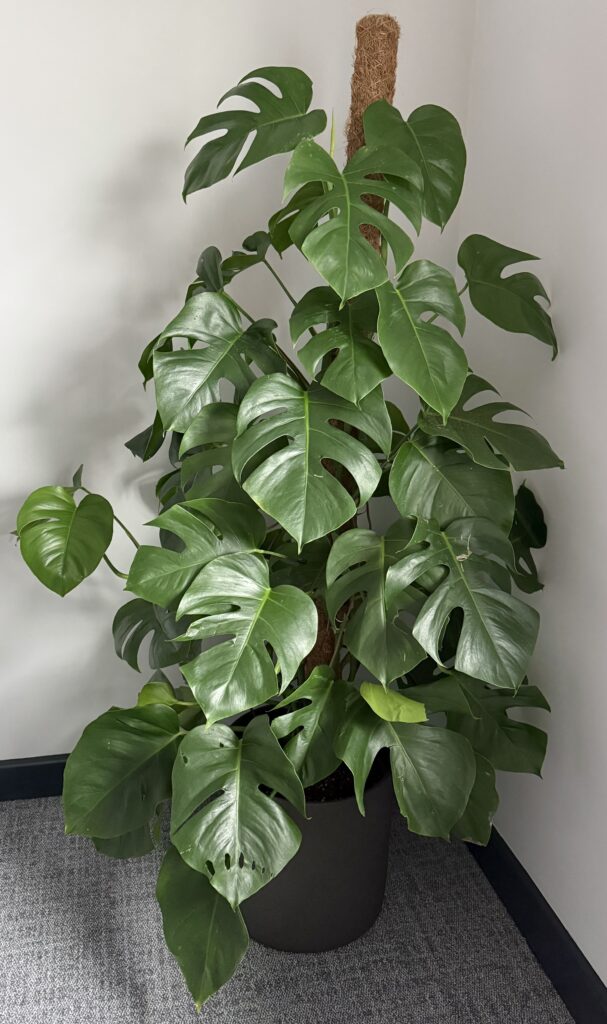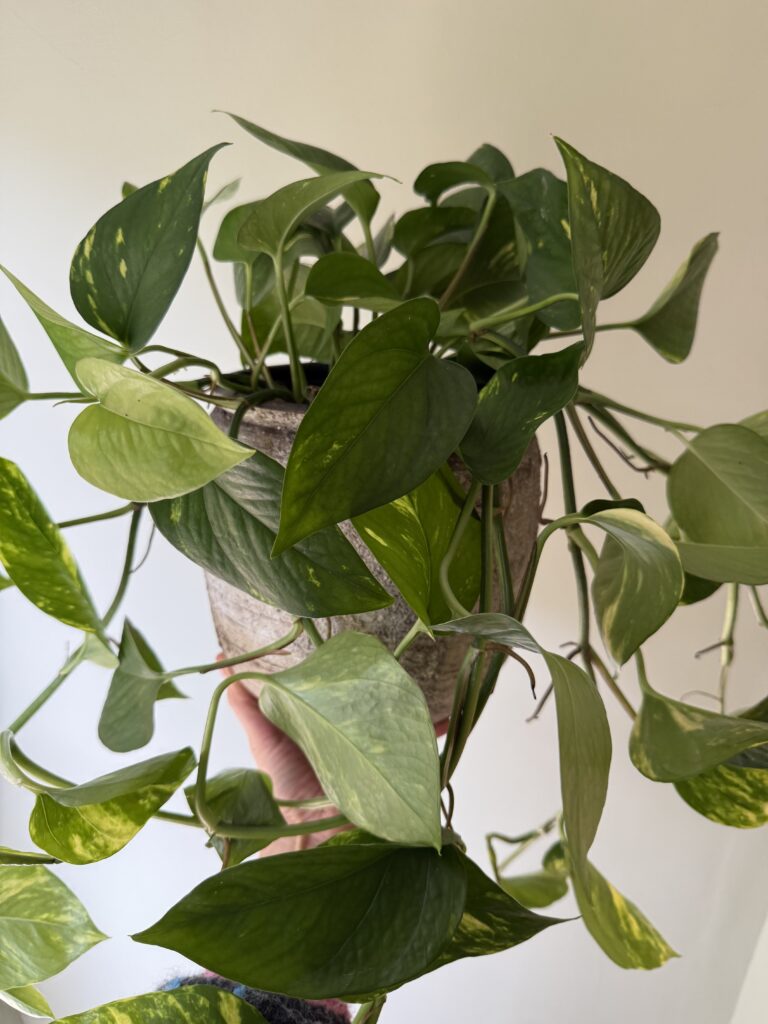There are so many benefits to keeping and caring for indoor plants…the colour green is aesthetically pleasing to look at, plants give us a purpose to look after another living thing and it’s so satisfying to see a new leaf unfurl.
I’m South African so I grew up walking around barefoot and climbing trees with my hands in soil, so I know first hand how therapeutic a connection to nature can be.
I’ve always had plants but it was the Covid pandemic that made me really connect to indoor plants and realise the many mental health benefits that plants can bring.
If you’re looking for low maintenance, easy to care for plants for your space, here are my top 3 easy plants to care for, including tips on watering, best light conditions and soil.
3 Houseplants For Beginners
1. Sansevieria (also known as Snake Plant or Mother In Law’s Tongue)
Sansevierias (photo above) are one of the easiest houseplants to care for – perfect for beginners or anyone with a busy lifestyle. Here’s everything about Sansevieria plants you need to know to help your plants thrive!
- Light: Perfect for a bright spot, out of direct sun. Can tolerate low light corners but avoid harsh, direct sun as it can scorch the leaves.
- Watering: Less is more with Snake plants! Let the soil dry out completely between watering. Water every 2-4 weeks, depending on your environment. Reduce watering during winter months as plants generally need less water during winter months.
- Soil: Use a well-draining soil such as a cactus or succulent mix with added worm castings for a fertiliser and grit for added drainage if required.
- Fertiliser: Use a liquid fertiliser during the growing months. Fertiliser makes a huge difference to plant growth and health.
2. Monstera Deliciosa
Monsteras (photo above) are tropical statement plants, giving true jungle vibes. Here’s everything about Monstera plants you need to know to help your plants thrive!
- Light: Prefers a bright, indirect spot. Can live in medium light but avoid harsh, direct sunlight (as the leaves can scorch) or very low light corners (which can stunt growth).
- Watering: Water when the top layer of the soil feels dry. I water my Monsteras every 7-10 days during the summer months but less during the winter months. Always empty excess water from the saucer or decorative pot after watering to prevent root rot.
- Soil: Use a rich, well draining soil mix. I love mixing my own soils together and for Monstera, I use a peat free soil, bark for humidity and draining, perlite for drainage, worm castings for a natural fertiliser and coco coir for root aeration.
- Fertiliser: Use a liquid fertiliser during the growing months. Fertiliser makes a huge difference to plant growth and health.
3. Pothos (Devil’s Ivy)
Pothos (photo above) is a perfect starter plant. It’s adaptable, fast-growing and super easy to keep alive. Here’s everything about Pothos plants you need to know to help your plants thrive!
- Light: Prefers a bright spot, out of direct sunshine. Can tolerate lower light conditions (although growth may slow and colour may fade if it doesn’t receive adequate light). Avoid direct sun which could scorch the leaves.
- Watering: Water when the top layer of the soil feels dry. I water my Pothos every 1-2 weeks during the summer months but less during the winter months. Yellowing leaves and soggy soil could be a sign of over-watering. Droopy, curly leaves could be a sign of under-watering.
- Soil: Use a well draining soil mix. I love mixing my own soils together and for Pothos (similar to Monstera), I use a peat free soil, bark for humidity and draining, perlite for drainage, worm castings for a natural fertiliser and coco coir for root aeration.
- Fertiliser: Use a liquid fertiliser during the growing months. Fertiliser makes a huge difference to plant growth and health.
Do you have any favourite beginner plants in your collection?
Thank you for reading! Hope you found this article helpful. Please get in touch with any questions and make sure to look out for new blog post on easy watering tips coming soon.
For more tips, please follow along on Instagram, Facebook and YouTube.
Chantal – Grow My Wellbeing




